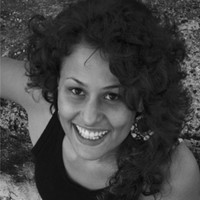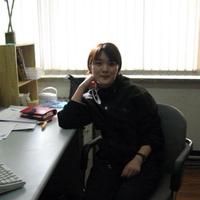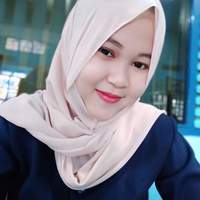
Clice Mazzilli
PhD, is Associate Professor of the Department of Project (FAUUSP), University of São Paulo, where she has been teaching since 2001. She obtained CAPES scholarship for studies at Facoltà di Architettura del Politecnico di Torino (1990) and Postdoctoral Fellowship of the Fundación Carolina for research at Universidad Politecnica de Madrid (2010). Currently coordinates the Graduate Program in Design and the Graphic Programming Lab (LPG) and is responsible for the Double Degree Agreement between FAUUSP (Design) and Politecnico di Milano (Scuola del Design). From 1997 to 2006 taught drawing at Art Institute of UNESP. Brings together expertise in the fields of Architecture, Design and Art, working mainly on the following subjects: experimental processes, visual language, color, environmental design, graphic and editorial design.
less
Related Authors
Claudia Fernández-Silva
UPB - Universidad Pontificia Bolivariana - Medellín
Stephen Neely
Carnegie Mellon University
Cristina Sylla
Universidade do Minho
Hyunji Doh
Temple University
Jihye Park
University of Central Florida
Gamel Wiredu
GIMPA
InterestsView All (30)







Uploads
Papers by Clice Mazzilli
Open Design model. Finally, we present the result of a series of interviews with professionals connected to Open Design. The methodology for the interviews was based on inviting professionals that, during the time the research was conducted, were working in Fab Lab Barcelona, an important place for the
contemporary Open Design discussion. All the interviews sought to research how the model that we are calling Open Design, and how this structure is facilitating new processes to achieve alternative models. We conclude that the current practice of Open Design has not yet realised the map drawn by its theory. There exist some problems like the inexistence of a really substantial way to negotiate and license the products, the difficulty of economically benefiting people involved and some specific problems with management and accessibility to local manufacturing laboratories. But, in another way, the research found some interesting qualities. The horizontal network between user/producer/professional is well established and it is possible to find accessible manufacturing
facilities. Designers are recreating their way of working and innovating in the process of creation, production and distribution of goods. The map of the Open Design model, compared with the
traditional one is different, mainly because the new system works with small, local structures of manufacturing, more fluid and open to discussing the process. This is aligned with the essence of open design: knowledge sharing.
“Bio-structural analogies: arms, wings and mechanical things”. O primeiro contato com o professor deu-se no evento XIII enerative Art International Conference, em dezembro de 2010, no Politécnico di Milano, Itália, onde ele apresentou o trabalho
With drawing: to see if you see what you see, com uma abordagem destacada do desenho como processo gerativo de pensar a
arquitetura e o design. A afinidade com as questões do processo criativo em projeto, envolvendo, simultaneamente, procedimentos da arte, do design e da tecnologia gerativa, aproximou nossos interesses acadêmicos e motivou a busca de possíveis intercâmbios entre nossas instituições.
pensamento deste estudo no âmbito do Design Audiovisual Digital.
Este “novo” refere-se às novas linguagens e como estas podem surgir durante o processo de criação, dado que, se as tecnologias estão em constante evolução - e estamos nos referindo aos softwares criativos - o designer pode atuar como agenciador neste processo mutante. O estudo desenvolve-se por meio
de pesquisa bibliográfica, constituída tanto pela investigação de teorias contemporâneas sobre imagem tempo, tecnologias de acesso, o “novo”, hibridismo, Metaprojeto – bem como por depoimentos de profissionais reconhecidos pelo seu talento e
competência no campo audiovisual. Entrecruzam-se os saberes teóricos e práticos, aproximando os pensamentos de Deleuze (1985), Aumont (2005), Santaella (2007), aos estudos específicos no campo audiovisual de Rossi (2007), Murch (2004), Rafóls e Colomer (2006) e aos fundamentos do Metaprojeto, de Moraes (2010) . Propõe-se Metaprojeto como uma alternativa de processo projetual para o design audiovisual digital, contrapondo os limites da metodologia convencional, ao posicioná-lo como
etapa prévia de reflexão e suporte ao desenvolvimento do projeto."
language of the media as television, film, video, multimedia,
computer graphics, hypertext, hypermedia and virtual
reality. Presents its entirety and proposes the 'foam' as a
possible model for their study because it is able to identify
the dynamic of its elements in whole, their complex
relationships; and reveals the many possibilities of
arrangements between them, apparently hidden in its various
expressive dimensions."
book-object for children and its respective ludic instrument.
This type of book has being recently published, and there is
an increasing interest by the editorial sector, mainly after
the 90’s. The book-object is understood as a product of
artistic expression and susceptible of reproduction. The
narrative results from the interaction between the book and
who is handling it. The relationship of graphic design with
the ludic structure has the objective to understand the
production process of the book-object. Books written by the
famous authors Pacovská and Munari were chosen for the
development of the case studies. These authors are quite
well-known by their experimental books.
Children´s book, Book design; Playful book
This article discusses the application of playful resources in the design of children’s book, and it is based
on the texts of Jean Perrot (1987) about interactive book. Books are analyzed from their playful
characteristics, which are considered tools to both entertain and stimulate the reading pleasure to children,
and its relation to the object production. The analysis is composed of a possible interpretation of the playful
tools and a picture of the children’s book. The main criteria of selection of the books is the presence of a
playful resource in the graphic design, associated, mainly, to the books created for the initiating readers or
books characterized by a small amount of texts or picture books. The exemplified playful resources, in this
research are: synesthetic game, riddle game, picture game and cutting game.
that aims to produce experimental installation artworks, based on
fractal structures analogous to biological systems, using comparativerelationships that come from the evolutive chain originated in the spider web culminating in the intelligent synthetic meshes. In this way, the concept of morphogenesis is discussed that, analoguely to the biology, there would be generative evolutions and agroupments in the chain: thread, web, cocoon, synthetic fabric and intelligent textile – textiles which involve the application of technology to the integration of the mesh to the human body [1]. To the understanding of this generative agroupment in this work, adjacent concepts to the fractal geometry will be used – the study of several irregular objects, as well as those mathematical obtained by successive iterations and the natural ones, which can be wrinkly, leaky or fragmented, but in the same level, in all the scales [2]. Although fractals are more known as objects resulting from matemathical algorithms in successive iterations in computer science, in this research the natural structures of irregular fractal geometry, those found in many organic and mineral systems will be more focused so that analogies with textile production can be made, from biologic threads until those that only use concepts of natural structures for production of high technology fibres. By experimentations in the major of installation art along this PhD research, it is intended that the conceived space user can be able to enter the webs, cocoons or bubbles which remind environment completely different from the exhibition space of the kind “white cube”, focusing sensoriality. This kind of site-specific works will intend to modify the architectonic characteristics traditionally found and make it become an immersion experience."
semiótica, organização da exposição.
This article describes an analysis about the Marcel Duchamp’s exhibition “A work that is not a `work of art`” organized at the MAM - Modern Art Museum of São Paulo, Brazil - between July and September, 2008. The exhibition analysis work presented here is supported by Jean Davallon’s theories. This French author develops a social semiotics approach for the communication strategies discussing how the semiotics and reception theories are used to build up the sense by the museums visitors. In this article the exhibition is presented first, the artist and his main concepts thereafter. Subsequently, the Davallon’s theoretical basis and finally the Duchamp’s exhibition analysis work.
Key words: Art exhibition, communication, semiotics, exhibit organization
"
Open Design model. Finally, we present the result of a series of interviews with professionals connected to Open Design. The methodology for the interviews was based on inviting professionals that, during the time the research was conducted, were working in Fab Lab Barcelona, an important place for the
contemporary Open Design discussion. All the interviews sought to research how the model that we are calling Open Design, and how this structure is facilitating new processes to achieve alternative models. We conclude that the current practice of Open Design has not yet realised the map drawn by its theory. There exist some problems like the inexistence of a really substantial way to negotiate and license the products, the difficulty of economically benefiting people involved and some specific problems with management and accessibility to local manufacturing laboratories. But, in another way, the research found some interesting qualities. The horizontal network between user/producer/professional is well established and it is possible to find accessible manufacturing
facilities. Designers are recreating their way of working and innovating in the process of creation, production and distribution of goods. The map of the Open Design model, compared with the
traditional one is different, mainly because the new system works with small, local structures of manufacturing, more fluid and open to discussing the process. This is aligned with the essence of open design: knowledge sharing.
“Bio-structural analogies: arms, wings and mechanical things”. O primeiro contato com o professor deu-se no evento XIII enerative Art International Conference, em dezembro de 2010, no Politécnico di Milano, Itália, onde ele apresentou o trabalho
With drawing: to see if you see what you see, com uma abordagem destacada do desenho como processo gerativo de pensar a
arquitetura e o design. A afinidade com as questões do processo criativo em projeto, envolvendo, simultaneamente, procedimentos da arte, do design e da tecnologia gerativa, aproximou nossos interesses acadêmicos e motivou a busca de possíveis intercâmbios entre nossas instituições.
pensamento deste estudo no âmbito do Design Audiovisual Digital.
Este “novo” refere-se às novas linguagens e como estas podem surgir durante o processo de criação, dado que, se as tecnologias estão em constante evolução - e estamos nos referindo aos softwares criativos - o designer pode atuar como agenciador neste processo mutante. O estudo desenvolve-se por meio
de pesquisa bibliográfica, constituída tanto pela investigação de teorias contemporâneas sobre imagem tempo, tecnologias de acesso, o “novo”, hibridismo, Metaprojeto – bem como por depoimentos de profissionais reconhecidos pelo seu talento e
competência no campo audiovisual. Entrecruzam-se os saberes teóricos e práticos, aproximando os pensamentos de Deleuze (1985), Aumont (2005), Santaella (2007), aos estudos específicos no campo audiovisual de Rossi (2007), Murch (2004), Rafóls e Colomer (2006) e aos fundamentos do Metaprojeto, de Moraes (2010) . Propõe-se Metaprojeto como uma alternativa de processo projetual para o design audiovisual digital, contrapondo os limites da metodologia convencional, ao posicioná-lo como
etapa prévia de reflexão e suporte ao desenvolvimento do projeto."
language of the media as television, film, video, multimedia,
computer graphics, hypertext, hypermedia and virtual
reality. Presents its entirety and proposes the 'foam' as a
possible model for their study because it is able to identify
the dynamic of its elements in whole, their complex
relationships; and reveals the many possibilities of
arrangements between them, apparently hidden in its various
expressive dimensions."
book-object for children and its respective ludic instrument.
This type of book has being recently published, and there is
an increasing interest by the editorial sector, mainly after
the 90’s. The book-object is understood as a product of
artistic expression and susceptible of reproduction. The
narrative results from the interaction between the book and
who is handling it. The relationship of graphic design with
the ludic structure has the objective to understand the
production process of the book-object. Books written by the
famous authors Pacovská and Munari were chosen for the
development of the case studies. These authors are quite
well-known by their experimental books.
Children´s book, Book design; Playful book
This article discusses the application of playful resources in the design of children’s book, and it is based
on the texts of Jean Perrot (1987) about interactive book. Books are analyzed from their playful
characteristics, which are considered tools to both entertain and stimulate the reading pleasure to children,
and its relation to the object production. The analysis is composed of a possible interpretation of the playful
tools and a picture of the children’s book. The main criteria of selection of the books is the presence of a
playful resource in the graphic design, associated, mainly, to the books created for the initiating readers or
books characterized by a small amount of texts or picture books. The exemplified playful resources, in this
research are: synesthetic game, riddle game, picture game and cutting game.
that aims to produce experimental installation artworks, based on
fractal structures analogous to biological systems, using comparativerelationships that come from the evolutive chain originated in the spider web culminating in the intelligent synthetic meshes. In this way, the concept of morphogenesis is discussed that, analoguely to the biology, there would be generative evolutions and agroupments in the chain: thread, web, cocoon, synthetic fabric and intelligent textile – textiles which involve the application of technology to the integration of the mesh to the human body [1]. To the understanding of this generative agroupment in this work, adjacent concepts to the fractal geometry will be used – the study of several irregular objects, as well as those mathematical obtained by successive iterations and the natural ones, which can be wrinkly, leaky or fragmented, but in the same level, in all the scales [2]. Although fractals are more known as objects resulting from matemathical algorithms in successive iterations in computer science, in this research the natural structures of irregular fractal geometry, those found in many organic and mineral systems will be more focused so that analogies with textile production can be made, from biologic threads until those that only use concepts of natural structures for production of high technology fibres. By experimentations in the major of installation art along this PhD research, it is intended that the conceived space user can be able to enter the webs, cocoons or bubbles which remind environment completely different from the exhibition space of the kind “white cube”, focusing sensoriality. This kind of site-specific works will intend to modify the architectonic characteristics traditionally found and make it become an immersion experience."
semiótica, organização da exposição.
This article describes an analysis about the Marcel Duchamp’s exhibition “A work that is not a `work of art`” organized at the MAM - Modern Art Museum of São Paulo, Brazil - between July and September, 2008. The exhibition analysis work presented here is supported by Jean Davallon’s theories. This French author develops a social semiotics approach for the communication strategies discussing how the semiotics and reception theories are used to build up the sense by the museums visitors. In this article the exhibition is presented first, the artist and his main concepts thereafter. Subsequently, the Davallon’s theoretical basis and finally the Duchamp’s exhibition analysis work.
Key words: Art exhibition, communication, semiotics, exhibit organization
"
Marili Brandão e Cyntia Malaguti apresentaram sua experiência acerca da organização de mostras e prêmios do design brasileiro no cenário nacional e internacional. Fernando Prado abordou a atividade do designer de produto, desvendando os processos de projeto de suas luminárias premiadas. Claudio Rocha e Tony de Marco, editores da revista Tupigrafia, exploram a “matéria prima” do design gráfico: a tipografia e caligrafia. Eddy Stephan expôs o perfil dos concursos de design no Brasil, os procedimentos e os critérios utilizados na sua organização.
conclude that certain colors better reflect the message of a fragrance. We argue, therefore, that once using the appropriate colors in packaging design, the communication can be enhanced, and the perception of the quality of a perfume can be anticipated even before it is smelt.
We argue that the visual design of a packaging must be in accordance with the fragrance. Our hypothesis is that it is possible to assign meanings to smells as we have assigned to colors, shapes, textures, and typography. We also argue that to the extent designers better understand the effects of smell and their meanings over consumers, it will be possible to better represent them graphically. That said, we discuss an overview of Brazilian perfumery market, as well as the contribution of visual design. We will outline and discuss methods by which the correlation between visual and olfactory senses in such a project becomes possible.